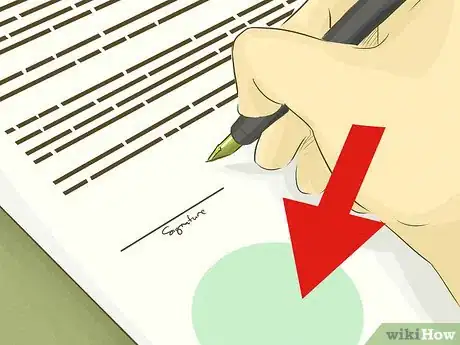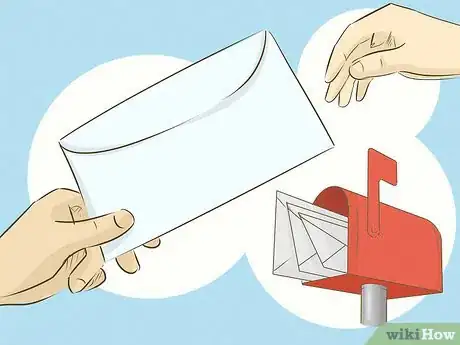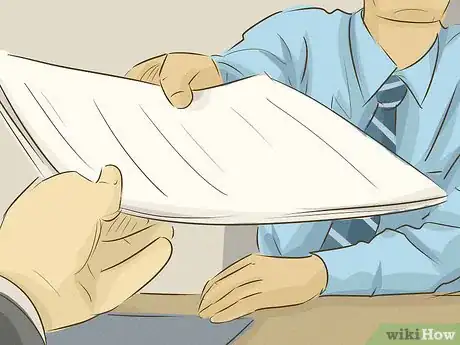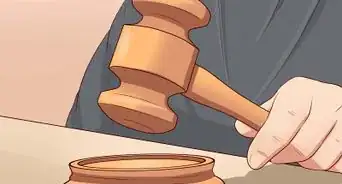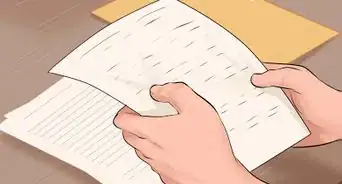This article was co-authored by Clinton M. Sandvick, JD, PhD. Clinton M. Sandvick worked as a civil litigator in California for over 7 years. He received his JD from the University of Wisconsin-Madison in 1998 and his PhD in American History from the University of Oregon in 2013.
There are 7 references cited in this article, which can be found at the bottom of the page.
This article has been viewed 21,889 times.
After you get a judgment in a lawsuit, the losing party might ask the judge to set aside the judgment. Your court’s Rules of Civil Procedure will explain the limited situations in which a judge can do so. For example, the judge might set aside the judgment if you used fraud or other misconduct to get a verdict in your favor. In order to oppose a motion to set aside judgment, you should draft your own motion and file it before the deadline.
Steps
Analyzing the Motion to Set Aside Judgment
-
1Read the motion. The person filing the motion should send you a copy. If you had a lawyer during the lawsuit, then the copy will probably be sent to your lawyer. Once you get a copy, you should sit down and read it.
- Pay attention to how much time you have to file a response in opposition. Your rules of civil procedure should tell you how soon before the hearing you must file and give notice to the other side that you have filed a motion.[1]
-
2Identify the reason for setting aside the judgment. A person can ask that a judgment be set aside only for limited reasons. Read the motion to find the reason. Generally, a party will ask that the motion be set aside for one of the following reasons:[2]
- Mistake, surprise, inadvertence, or excusable neglect.
- New evidence has been discovered and it could not have been discovered in time to make a motion for a new trial.
- Fraud, misrepresentation, or misconduct. Here, the other side will claim you did something underhanded which prevented them from being able to offer a defense.
- The judgment is void, for example, because the court plainly did not have jurisdiction over the case.
- The judgment was already satisfied, released, or discharged; the judgment was based on an earlier judgment that was reversed or vacated; or applying the judgment prospectively is no longer equitable. For example, the other side might claim to have paid off a debt before you got a court judgment on that debt.
- Other extraordinary reasons justifying relief.
Advertisement -
3Look at the evidence offered in support. You should also identify what evidence the person has to support their arguments. This evidence should be mentioned in the motion and should be attached to the motion as well.
- For example, if the person claims he or she wasn’t served properly, then look to see whether the person included an affidavit (or a signed declaration) to that effect.
- The person might claim that you or your lawyer committed fraud or made misrepresentations in court. Look to see what proof they have. Has someone signed an affidavit? What evidence of fraud did they point to?
-
4Come up with counterarguments. Your precise counterargument will depend on the argument the other side makes. You generally can make the following kinds of arguments:
- The other side has the facts wrong. For example, they might claim that you didn’t properly serve them with a summons and a copy of the complaint. However, your server might have made service properly. With this kind of factual dispute, you will need supporting evidence, such as an affidavit, to support your argument that the other side has its facts wrong.
- The other side’s legal argument isn’t valid. For example, the other side might claim that she was too busy planning a wedding to respond to the complaint and summons. This is not a valid legal reason that warrants setting a judgment aside. Accordingly, you can argue that the offered reason is insufficient.
- The other side waited too long to file the motion. For example, the federal rule requires that the party bring a motion to set aside judgment within a year of the judgment if the party is alleging newly discovered evidence, mistake or excusable neglect, or fraud/misconduct.[3] If the person waited 18 months, then you can argue they waited too long. Read your relevant rule (state or federal) to see how much time the person has to file the motion.
-
5Meet with a lawyer. If you need help figuring out how to oppose a motion to set aside the judgment, then meet with a lawyer. He or she can listen to you describe the circumstances of the lawsuit and then offer advice.
- You can get a referral to a lawyer by contacting your local or state bar association and asking for a referral.[4]
- Call the lawyer and ask to schedule a meeting. Also ask how much the lawyer charges.
Drafting Your Motion in Opposition
-
1Read your local rules. It might have been a while since your lawsuit ended. In that case, you should get another copy of the court’s local rules and read them. They will contain helpful information about filing motions, including the content and format of the motion.[5]
- You can get a copy by calling the judge’s chambers or by looking on the court’s website.
-
2Format your document. Make your motion double-spaced and use a size 14 font. You can use Times New Roman or Arial style.[6] Read your local rules to see if the judge has required a certain format.
- You also need to insert the caption: the name of the court, the names of the parties, the case number, and the name of the judge. You can pull this information from the other side’s Motion to Set Aside Judgment.
- Insert a title beneath the caption. You can title your motion “Opposition Motion to Defendant’s Motion to Set Aside Judgment” or something similar.
-
3Add your introduction. You can open the motion by identifying yourself and then briefly stating that you oppose the other side’s motion to set aside judgment. You also might want to explain some of the procedural history of the lawsuit, such as:[7]
- the date you filed the complaint
- the day you served notice on the defendant
- the date you received a default judgment (if there was one)
- if there was a trial, then the dates of the trial
-
4Explain the factual background. You also might want to go through the facts of the background dispute.[8] You should cite to the complaint you filed in the lawsuit (if you were the plaintiff). Because a lot of time might have passed since the judge entered judgment, this background information could be helpful.
-
5Make your argument. Your argument may be simple or it may be complex. The amount of detail and complexity will depend on the other side’s argument. Remember the following tips for creating a solid argument:
- Respond to each argument made by the other side. If they raise three reasons why the judgment should be set aside, then respond to all three. Don’t forget one.
- Research whether the court opinions cited by the other side really stand for what they say. You can pull up court opinions on Google Scholar. Type in the citation, e.g., 212 F.2d 1002. Read the opinion. If the opinion doesn’t stand for what the other side argues, then you should inform the judge.
- Find helpful court opinions. The other party might claim that the judgment should be set aside because their lawyer made a strategic mistake during trial. You should find a court opinion which states that this is not a valid reason. For example, the case Nemaizer v. Baker, 793 F.2d 58 (2d Cir. 1986) states: “Mere dissatisfaction in hindsight with choices deliberately made by counsel is not grounds for finding the mistake, inadvertence, surprise or excusable neglect necessary to justify Rule 60(b)(1) relief.”[9]
-
6Insert a conclusion. The conclusion can be brief. You should simply restate that the other side’s motion is without merit and should be denied.
- Sample language could read: “For the foregoing reasons, Defendant’s Motion to Set Aside Judgment should be denied.”
-
7Sign the motion. Below the conclusion, insert the words “Respectfully Submitted” and then a signature line. Underneath the signature line include your name, address, and telephone number. Sign the motion.
- If you are a lawyer, also include your bar number.
- If you are representing yourself, then include “pro se” or “pro per” after your name.
-
8Add a certificate of service. On a separate sheet of paper, you should type out a statement that certifies you sent a copy of your motion to the other side. You can then attach this certificate of service to your motion.
- Your certificate might read: “I, [insert your name], hereby certify that on [insert date], I caused a true copy of the Motion in Opposition to Set Aside Judgment and accompanying Affidavits in Support by first class mail upon [insert address of the other side or their attorney].” Then sign and date the certificate.[10]
-
9Create any necessary exhibits. For example, the other side might claim that it didn’t receive service properly. You can include a copy of your signed Proof of Service form, which should have been signed by the person who served a copy of your complaint and a summons on the defendant. Attach an exhibit sticker to the document.
- You also might need affidavits from other people with relevant knowledge. For example, your lawyer might deny that he did anything improper during trial that would warrant setting aside the judgment. In a signed affidavit, the lawyer could deny each specific allegation.
- See Write an Affidavit for tips on how to draft one.
Filing Your Motion in Opposition
-
1Assemble the motion. You should gather your motion and any supporting documents or affidavits. Put them in order and make at least one copy for your records. You will also have to provide a copy to the other side, so make a second copy as well.
- The court may also want multiple copies. It is best to make four copies, at least.
-
2Serve notice on the other side. Before filing, you should serve your motion in opposition on the other side. Serve it using the method described in your certificate of service. If you mail a copy of your motion, then send it certified mail, return receipt requested and hold onto the receipt.
- Remember that you must give sufficient advance notice. For example, your rules of civil procedure might require that you serve notice a certain number of days before the hearing date. However, the rules might also state that if you mail your notice then you must give five additional days for it to arrive in the mail.[11]
-
3File the motion with the court. Take the original and your copies to court. Ask the clerk if you can file. You should also ask the clerk to stamp one of your copies with the date. You can keep the copy for your records.
- If you filed your motions electronically in the lawsuit, then you will probably file your opposition motion electronically as well. Check to see that your account and password are still active. They might have been deactivated after final judgment was entered. See the court clerk for help.
References
- ↑ http://www.courts.ca.gov/partners/documents/insformot.pdf
- ↑ https://www.law.cornell.edu/rules/frcp/rule_60
- ↑ https://www.law.cornell.edu/rules/frcp/rule_60
- ↑ http://apps.americanbar.org/legalservices/findlegalhelp/home.cfm
- ↑ http://www.federalpracticemanual.org/chapter6/section3
- ↑ http://www.publiccounsel.org/tools/materials/files/GUIDE-How-to-File-a-Motion-PLUS-Form.pdf
- ↑ http://www.asser.nl/upload/documents/DomCLIC/Docs/NLP/US/Constant_P_Memo_in_Opposition_to_D_Second_MTN_for_Relief_of_Void_Judgment_81.pdf
- ↑ http://www.asser.nl/upload/documents/DomCLIC/Docs/NLP/US/Constant_P_Memo_in_Opposition_to_D_Second_MTN_for_Relief_of_Void_Judgment_81.pdf
- ↑ https://scholar.google.com/scholar_case?case=18004443157482579624&q=Rule+60(b)(1)+mistake&hl=en&as_sdt=400003









-Step-1.webp)

